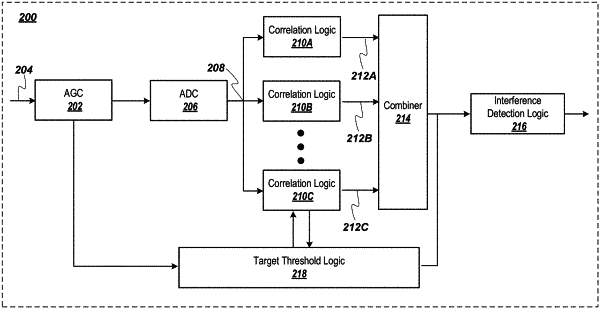| CPC H04B 1/1027 (2013.01) [H04B 7/18513 (2013.01)] | 18 Claims |

|
1. A method, comprising:
receiving a first radio frequency (RF) signal;
generating digital samples corresponding to the first RF signal;
determining a first correlation coefficient using a first copy of the digital samples with a first cyclic autocorrelation (CAC) function comprising a first value and a second value, wherein the first value indicates a signal delay of the first CAC function and the second value indicates a first cyclic frequency of the first CAC function, wherein the first correlation coefficient represents first peak values for a first number of cyclic peaks given the signal delay and the first cyclic frequency;
determining a second correlation coefficient using a second copy of the digital samples with a second CAC function comprising the first value and a third value corresponding to a second cyclic frequency of the second CAC function, wherein the second cyclic frequency is an integer multiple of the first cyclic frequency, wherein the second correlation coefficient represents second peak values for a second number of cyclic peaks given the signal delay and the second cyclic frequency;
determining a total correlation coefficient by combining the first correlation coefficient and the second correlation coefficient, wherein the total correlation coefficient represents a sum of the first peak values and the second peak values; and
responsive to determining that the total correlation coefficient meets a threshold value, determining that a portion of the first RF signal is attributed to a second RF signal.
|